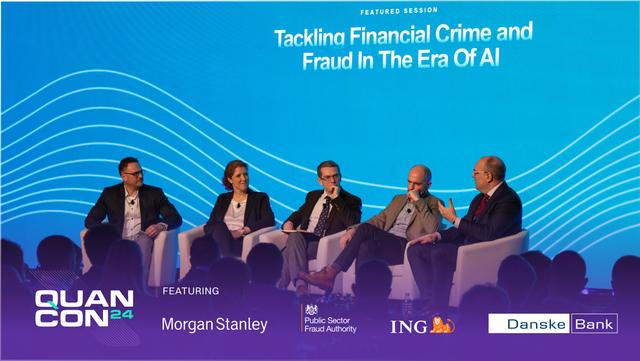4 AML And Counter Terrorist Financing Myths (And How To Bust Them)
Here's how Quantexa debunks the most common anti-money laundering and/CTF myths in banking using its AI-enabled technology to provide a contextual view of data.
Detecting financial crime and preventing money laundering remains a key challenge in the banking sector, especially for consumer banks. The crux of this problem is the disparate, siloed data within a bank that prevents investigators from seeing the full picture.
Most banks have yet to deploy technology that can provide a true, 360-degree view of customer and counterparty data across all areas of the bank. Meanwhile, traditional transaction monitoring processes can tell part of the story, gauged from a single transaction, but they can't see beyond the bank's network to provide the full assessment of risk.
Today, however, AI-enabled technology can be leveraged to unify siloed data sources, connect relevant relationships, and provide context to the relationships, connections, and behaviors across the bank. Once the data foundation has been established, investigations can focus on holistic relationships pertinent to the customer to gain a more accurate view of risk.
To illustrate how much Quantexa’s technology and contextual-based approach improves the way banks can now mitigate risk and aid compliance, we asked our experts to single out the four most common myths in retail banking and tackle them head-on.
Myth 1: “We need copious resources to handle the volume of alerts we generate”
Myth busted: Banks can now automate alert dispositioning using Quantexa's AML solutions to reduce false positives by 75% with a typology-led approach to alerting. This saves time, resources, and money while empowering detection teams to focus on the suspicious activities that matter to mitigate money laundering risks.
By taking a Contextual Monitoring approach to risk assessment, financial institutions can harness the power of networks to proactively protect their organizations and customers with a unified strategy that clearly identifies suspicious activities.
Myth 2: "We can’t be innovative and compliant at the same time”
Myth busted: Now banks can stay compliant using a "white-box" approach to the adoption of advanced techniques such as network analytics, AI, and machine learning. Quantexa's Decision Intelligence Platform empowers investigative teams to find criminal offenses with innovative detection methods that identify “clusters” of connected suspicious activities.
This innovative technology then uses typology-based "scorecards" for automated alert generation, grouping, and scoring. The result? Anti-money laundering teams gain greater investigative clarity to more effectively triage alerts to help solve more financial crimes faster while uncovering emerging risks banks might not have been aware of.
Myth 3: “We already have a comprehensive view of our customer, which is all we need”
Myth busted: Many banks believe they have a single view of their customers already and, in one sense, they may do. The problem is that this view is based solely on internal data.
Quantexa adds value by integrating multiple external data sources with internal data for a more comprehensive, single view of customers and their counterparties. This provides the necessary context of transactions that would otherwise go unnoticed, such as a customer recently incorporating several new businesses that a financial institution is not banking.
Having this ability to build a single, contextual view of customers and their counterparties gives banks the confidence to help automate and augment decision-making, detect risk, stay compliant, and boost revenue.
Myth 4: "We can’t risk assess our customer's non-bank counterparties”
Myth busted: With today's technology, a single, consolidated view of non-customers outside of the bank's internal portfolio is now achievable.
Organized criminal organizations conducting money laundering at scale often rely on complicit and collusive corporate service providers and accountants to set up complex and opaque corporate structures. However, these complicit actors often leave telltale signs behind that can be identified by their concentrated relationships.
Quantexa's technology identifies who your customers are interacting with to determine if they are connected to any of these high-risk networks. Connecting data like this which is often siloed, provides a new way of looking at risk management that can help banks make better, context-driven decisions to reduce credit and lending risk.
Having the ability to see the full, 360-degree view of customers and their counterparties, with a comprehensive and contextual view of the relationships and behaviors in these networks, is key to winning the fight against financial crime.
To see how Quantexa can help take your bank's compliance programs to the next level, visit here.




